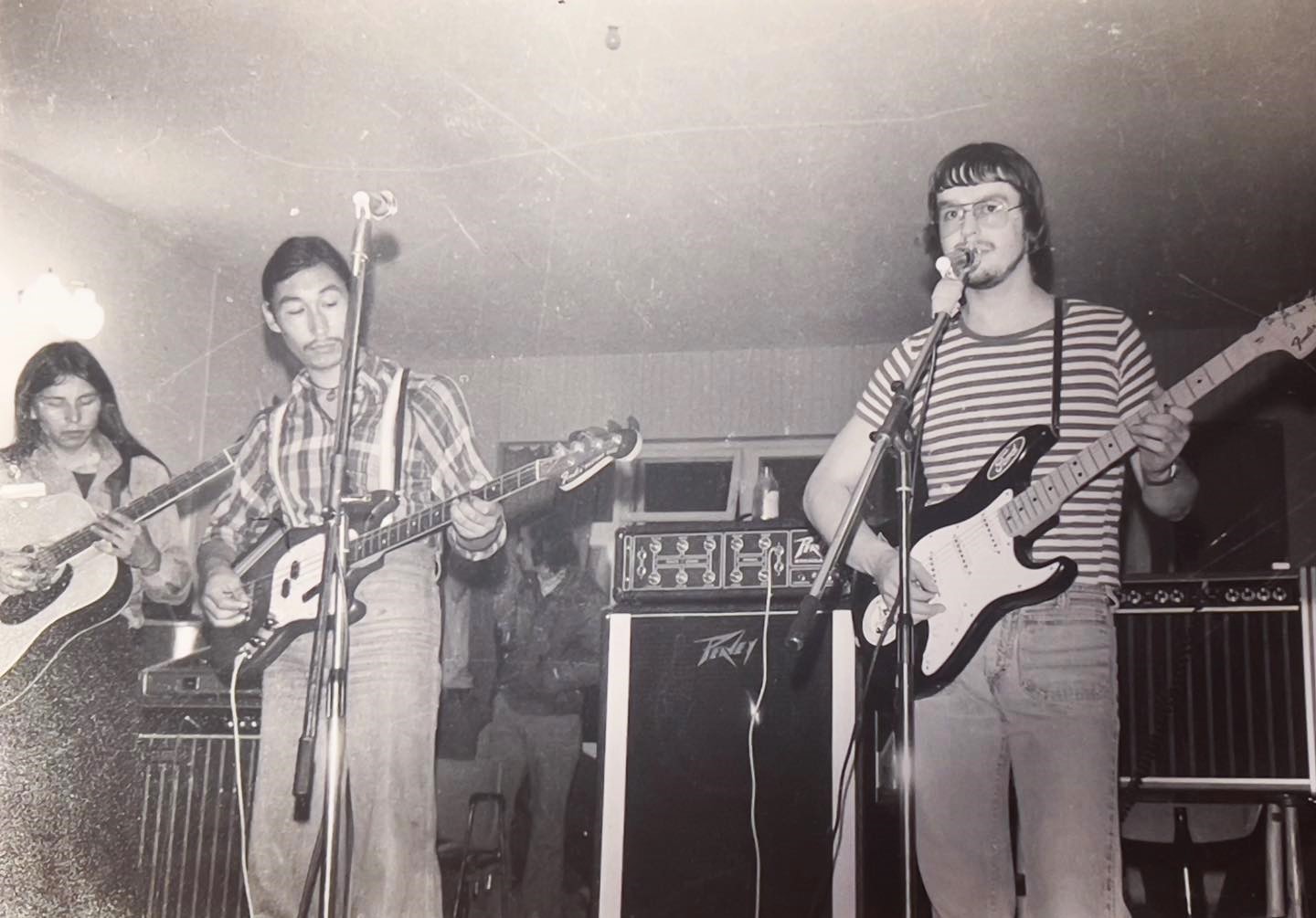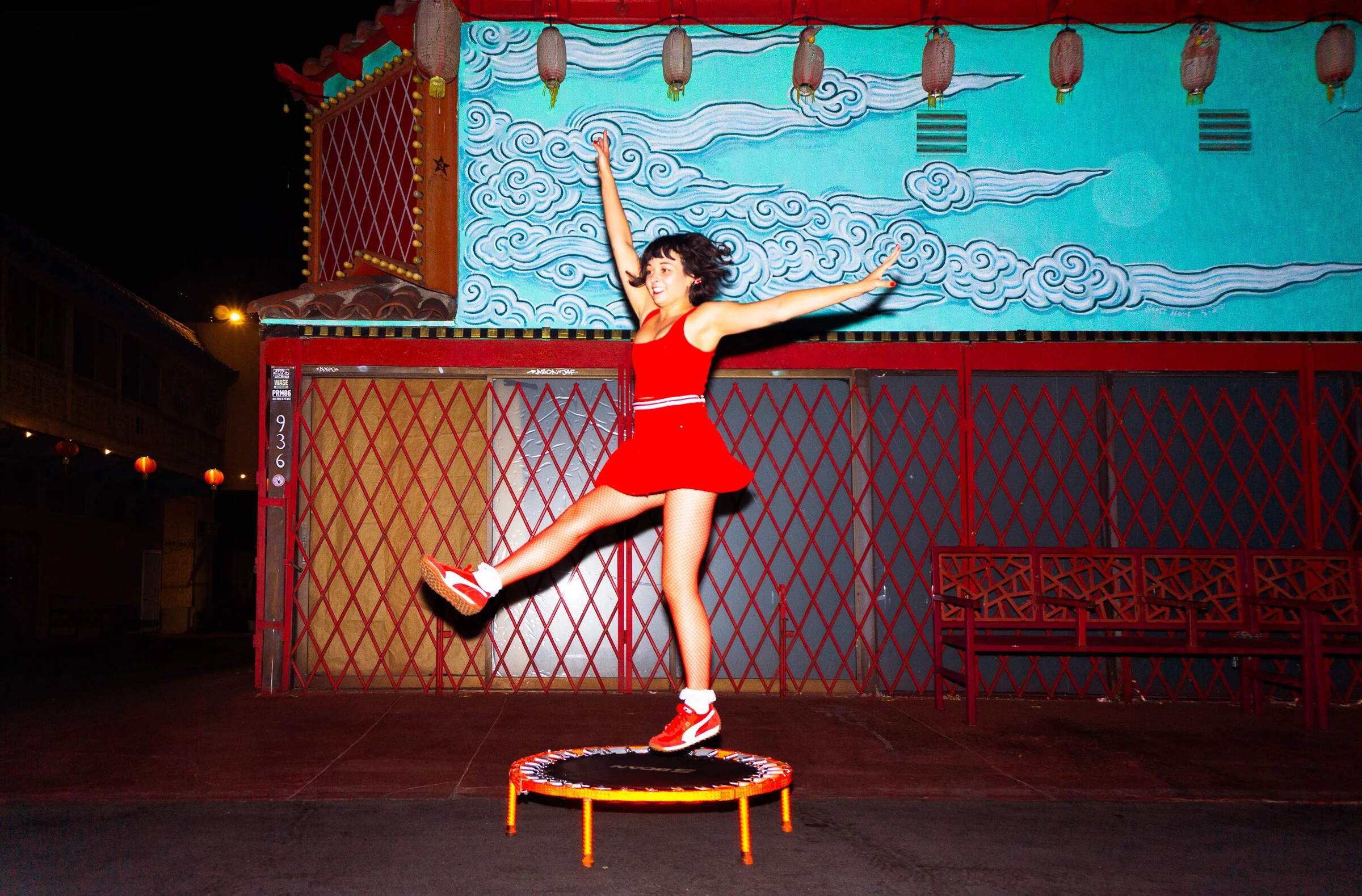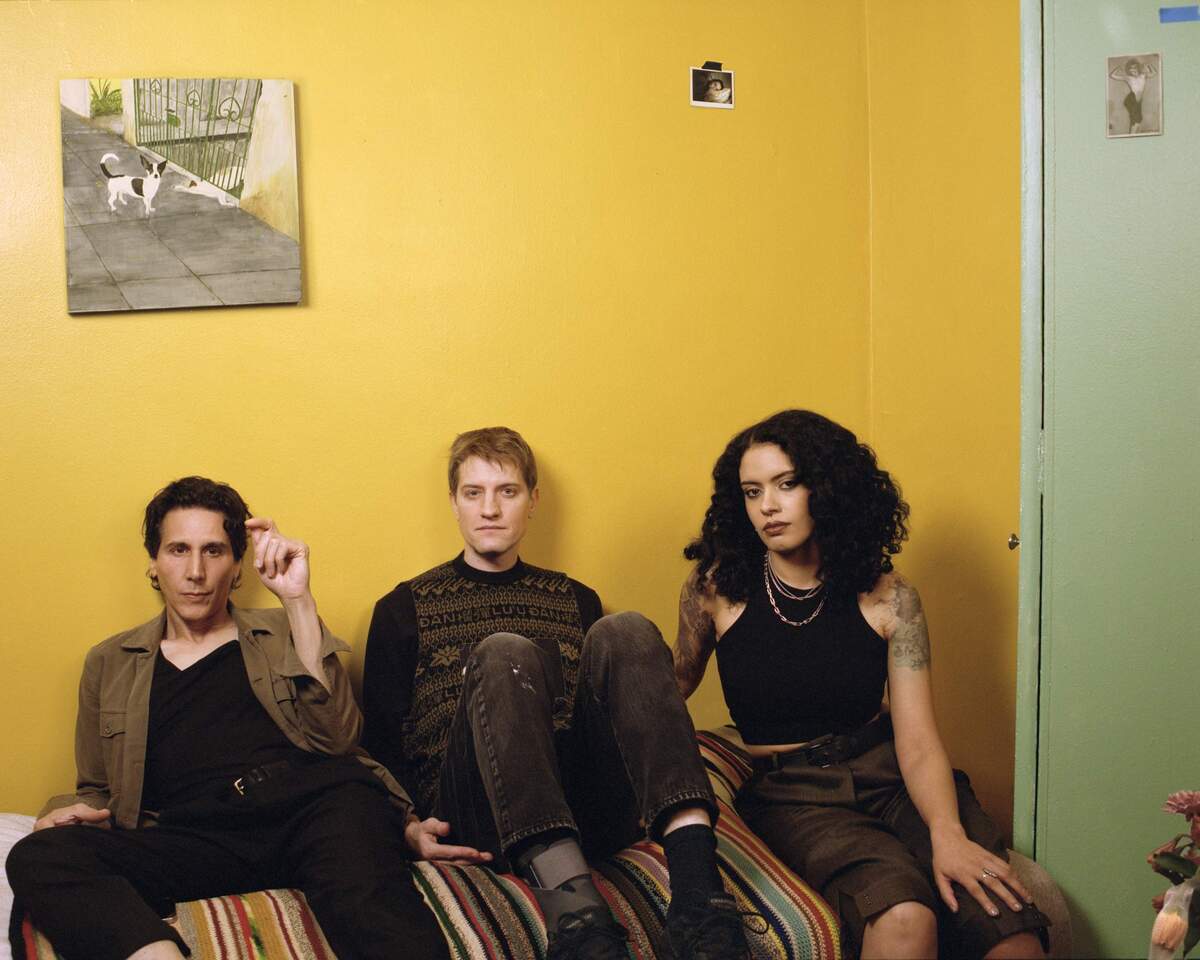Sume | Interview | Trailblazers of Greenlandic Rock
Sumé, an innovative Greenlandic rock ensemble, emerged onto the musical landscape in 1972 through the collaborative efforts of Malik Høegh and Per Berthelsen. Renowned for their captivating vocal delivery and skilled guitar performances, they swiftly captivated audiences with their dynamic sound.
Hailing from Sorø, Denmark, where they were enrolled as students, the genesis of their musical expedition commenced near southeast of Copenhagen. Their debut album, ‘Sumut,’ released in 1973, marked a significant foray into unexplored musical realms, positioning them as pioneers of rock music in the Greenlandic vernacular. Their music, characterized by its bold and politically charged themes, sparked a cultural revolution within Greenland.
Despite disbanding in 1977 following the release of their inaugural folk rock album under Greenland’s inaugural label, Ulo, Sumé’s impact endured. Periodic reunions for electrifying live performances kept their legacy alive. Their triumphant resurgence in 1994 with ‘Persersume,’ commemorating Ulo’s 100th album release, reignited enthusiasm among fans, underscoring their lasting influence.
In October 2014, the documentary Sumé: Mumisitsinerup nipaa directed by Inuk Silis Høegh, provided a captivating retrospective into the band’s illustrious trajectory, solidifying their stature as icons of Greenlandic rock.
Per Berthelsen, a Greenlandic musician and politician born in 1950 in Qeqertarsuaq, co-founded Sumé, influencing Greenlandic rock music while later venturing into politics, eventually securing seats in the Nuuk town council, the Greenlandic parliament, and the Nordic Council, alongside his contributions to the Qilaat Music Aps label in the 1980s.
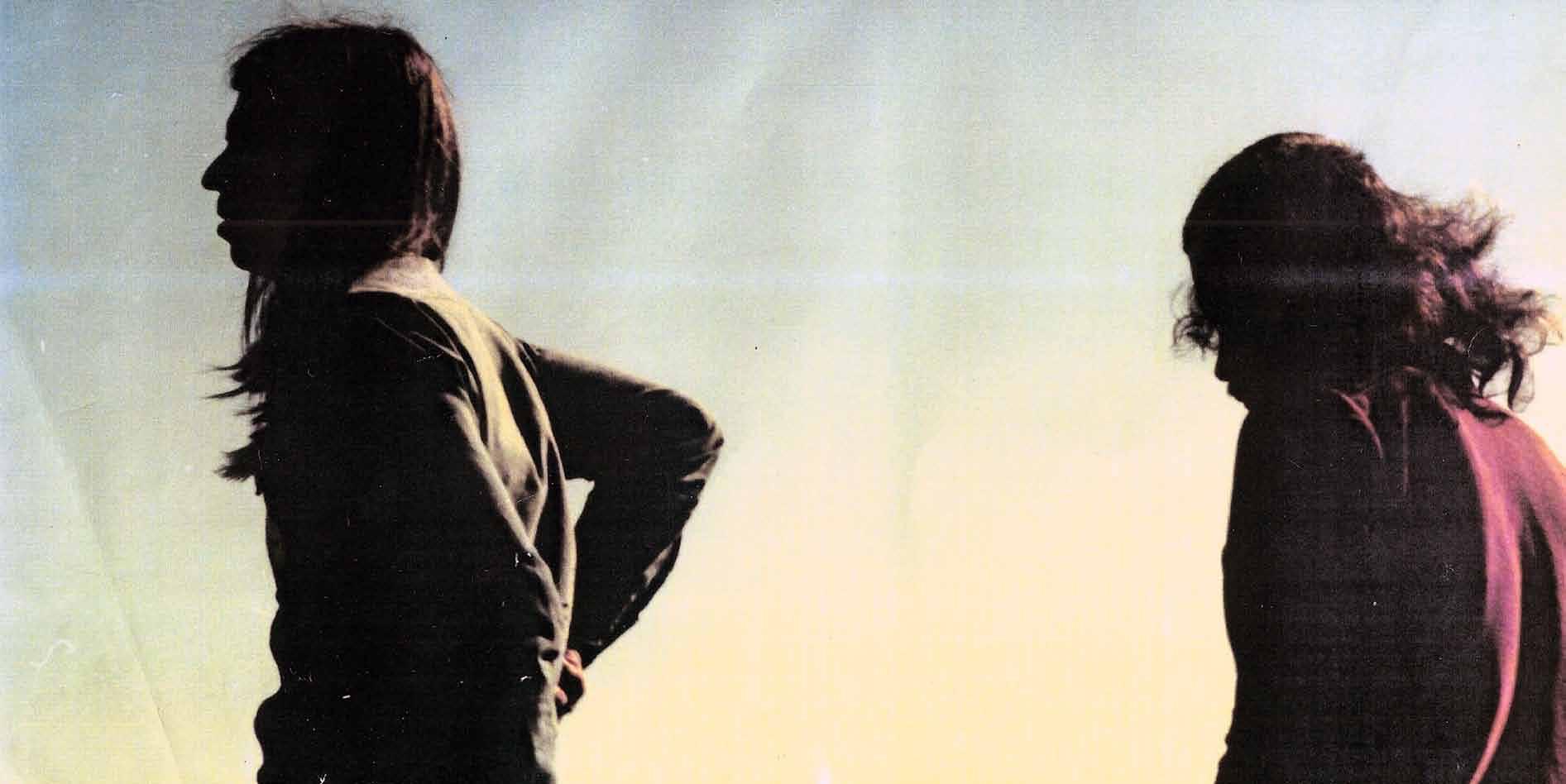
“Our primary objective was to foster acceptance of our distinct identity and assert Greenlandic culture.”
Can you elaborate on the formation of Sume and the overall vision of the band?
Per Berthelsen: Sure. It would be too complicated to delve into the shifting musicians that varied during the band’s existence, so I’ll primarily mention myself and Malik where it’s convenient. I’m originally from North Greenland but grew up in Nuuk, while Malik hails from South Greenland. Occasionally, we encountered minor dialectical differences due to our respective backgrounds. The other members of the band didn’t participate in the music Malik and I created, nor in Malik’s lyrical contributions, but they hailed from various parts of Greenland. We all crossed paths because we were studying in Denmark. From 1969 to 1971, Malik and I operated as a duo before expanding into a band when we were offered the opportunity to produce the first Greenlandic LP. Initially, I composed and wrote lyrics in English until I met Malik, who later translated the English lyrics into Greenlandic. Malik is almost three years younger than me, and we met quite serendipitously in Sorø, where I was attending a senior boarding high school and he was visiting a friend. At that time, he was studying to become a uranium laboratory assistant and lived in a small apartment about 20 kilometers away from me. Our chance encounter completely altered our lives. I happened to hear him playing and singing in Greenlandic when I returned from football practice, in the room of another younger Greenlandic student. So, I fetched my guitar, joined him, and we started collaborating. Only after he finished the song did we properly introduce ourselves, and he suggested we meet again. And so, we did, initiating a mutual creative process where we met a couple of times a week, increasing in frequency when I acquired my own place upon starting teacher training college after completing high school.
Before Sume, both Malik and I, along with the changing musicians, had played in various bands. I’m the only one who had made recordings prior to forming Sume. You can find these recordings on platforms like YouTube and iTunes under my name. After Sume, I had a highly popular band called QAAQ, also available on these platforms. My last concert with QAAQ in 2013 was recorded and released as a DVD, featuring the collaboration of ten prominent musicians in Greenland, including an American pianist who had formerly served as the concert master for Tom Jones during his USA tour many years ago, along with my two daughters and my younger brother.
Malik’s and my musical tastes differed considerably. Malik leaned towards bands like The Doors, while I was more inclined towards The Beatles and later, The Eagles. During Sume’s existence, I didn’t write lyrics; instead, I focused on composing and arranging songs, incorporating vocal harmonies and guitar solos, among other elements.
Malik was deeply interested in societal issues, whereas my focus lay more in preserving the Greenlandic language. I resided in Denmark for 11-12 years before returning to Greenland after completing our third LP. The primary objective of the band was to foster acceptance of our distinct identity and to assert that we are not merely “Northern Danes.”
In 1975, I completed my teaching degree and returned to Greenland to contribute to my homeland. Since then, I’ve resided in Nuuk, engaging in various careers. I initiated educational programs on the National Radio (KNR), produced television programs, served as administrative secretary at The ICC (Cultural Cooperation among Inuit in Greenland, Canada, and Alaska), worked as marketing and communication manager for a bank, became the first Greenlandic professional TV host on the National Television KNR-TV, served as a city councilor for 24 years, including 12 years as the 1st Vice-Mayor of Nuuk, and held a parliamentary seat in Greenland for 20 years, serving as the Minister of Finance and Foreign Affairs. For the past eight years, I’ve been retired but remain engaged in translation work and act as a guest teacher at the Business School of Greenland.
In 2011, I fell seriously ill with an infection after pricking myself on a guitar string while preparing for Sume’s performance in Denmark, which led to meningitis. The doctors were initially skeptical about my chances of survival, and I spent a year in the hospital. However, I fought my way back and concluded both my political and musical careers, including the production of a documentary film about Sume. Unfortunately, I’ve lost my voice, so I no longer play or sing at all.
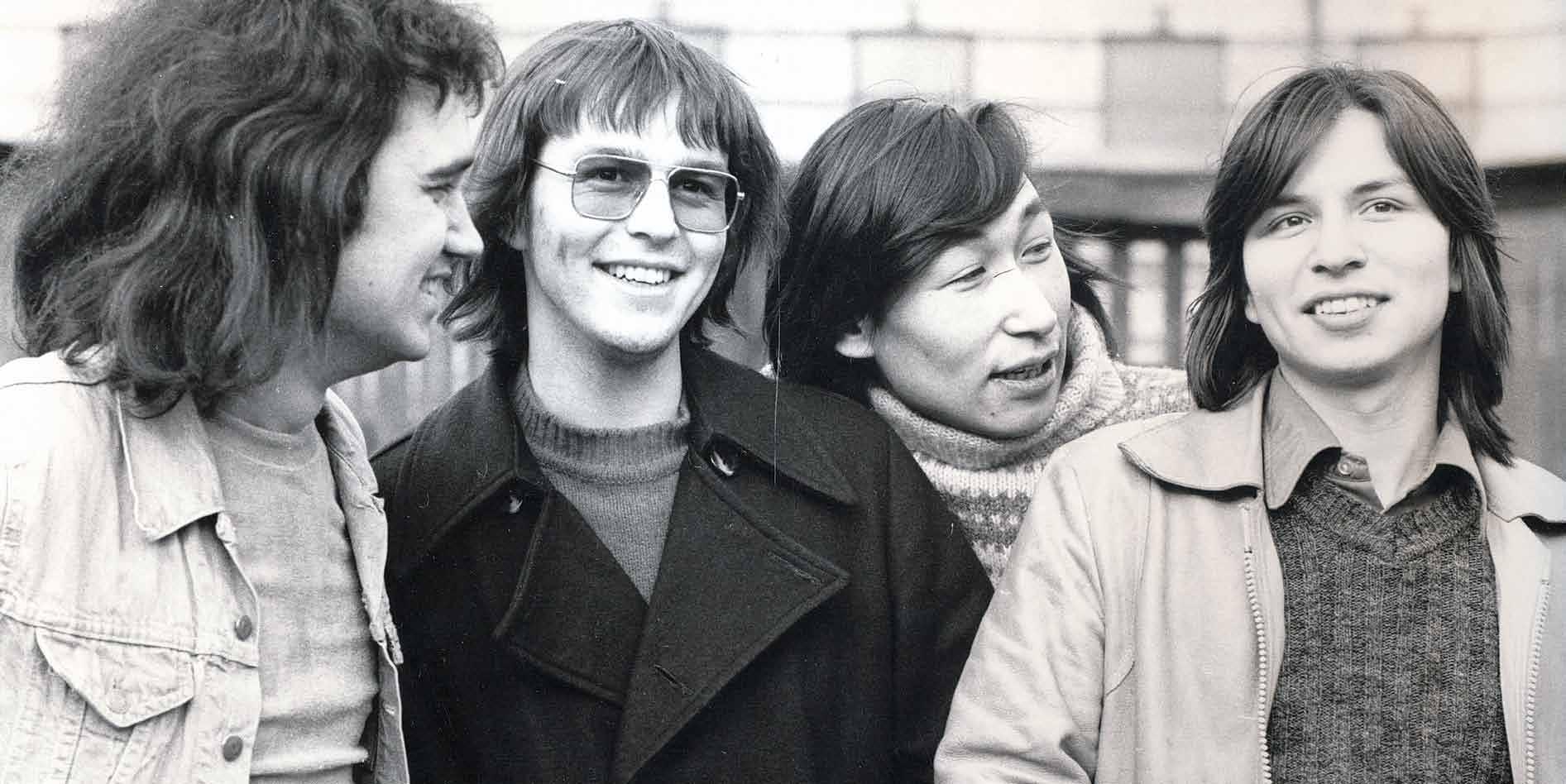
“We recorded our debut album ‘Sumut’ in just 64 hours, marking the emergence of Greenlandic political rock.”
Can you tell us about your debut album, ‘Sumut’? Where was it recorded, what equipment did you use, and who was the producer? And how many hours did you spend in the studio?
In 1973, we released our first LP, which garnered tremendous attention both in Denmark and Greenland. We recorded it for a Danish socialist-left-leaning recording company called Demos, under the musical direction of their producer Karsten Summer, with whom Malik later formed a Greenlandic music company called Ulo in 1975. The cover of the album, however, was created without our direct involvement. It features a picture depicting a Greenlander avenging his brother’s death by killing a Viking, sourced from a saga. This imagery symbolizes the conflict between imperialists and indigenous peoples.
The album was recorded at Sweet Silence Studio in Copenhagen and was completed within 64 hours. All our releases, including mixing, were accomplished within a span of 70 hours. We played live in the studio, but each part of the music was recorded separately on tracks, allowing for post-recording mixing. This approach contributed to the tight and compact sound characteristic of Sume’s music, which I often refer to as “Ice-rock.”
For our debut album, we were supported by Danish musicians with whom I had previously played during my time at the teachers training college in Holbæk. During the early years, we didn’t have our own instruments; instead, we borrowed equipment from various Danish bands and a music shop, where we developed friendships with the manager. Personally, I preferred to perform my solo parts using a VOX AC 30 amplifier. Later on, we utilized equipment custom-made for us by a Danish electrical engineer who happened to be a friend of my sister’s Danish husband.
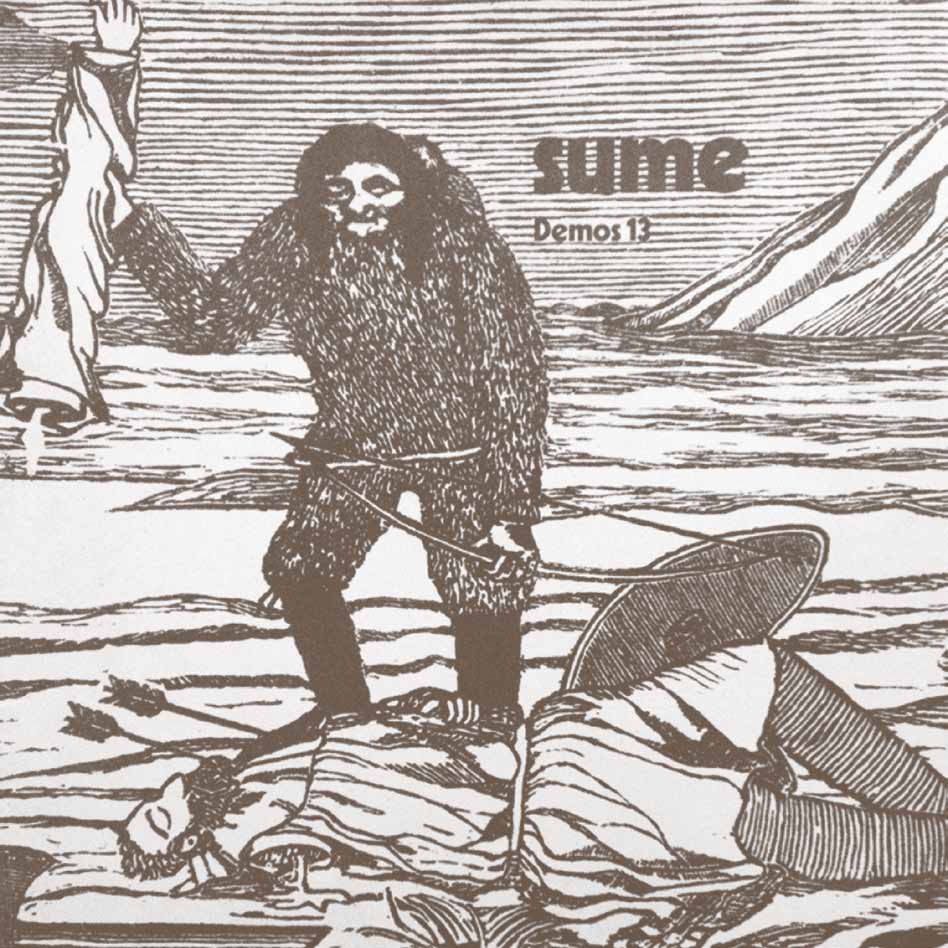
The album marked the emergence of the first rock album in the Greenlandic language, paving the way for Greenlandic political rock. Did you receive a lot of press coverage?
We are considered the pioneers of rock and roll in Greenland. About a year after our first release, new bands slowly began to emerge, all inspired by Sume. They refer to us as the “living legends” and say, “Sume is to Greenland what Gasolin is to Denmark and The Beatles are to the world.” In Greenland, we performed outdoors several times because there weren’t indoor venues large enough.
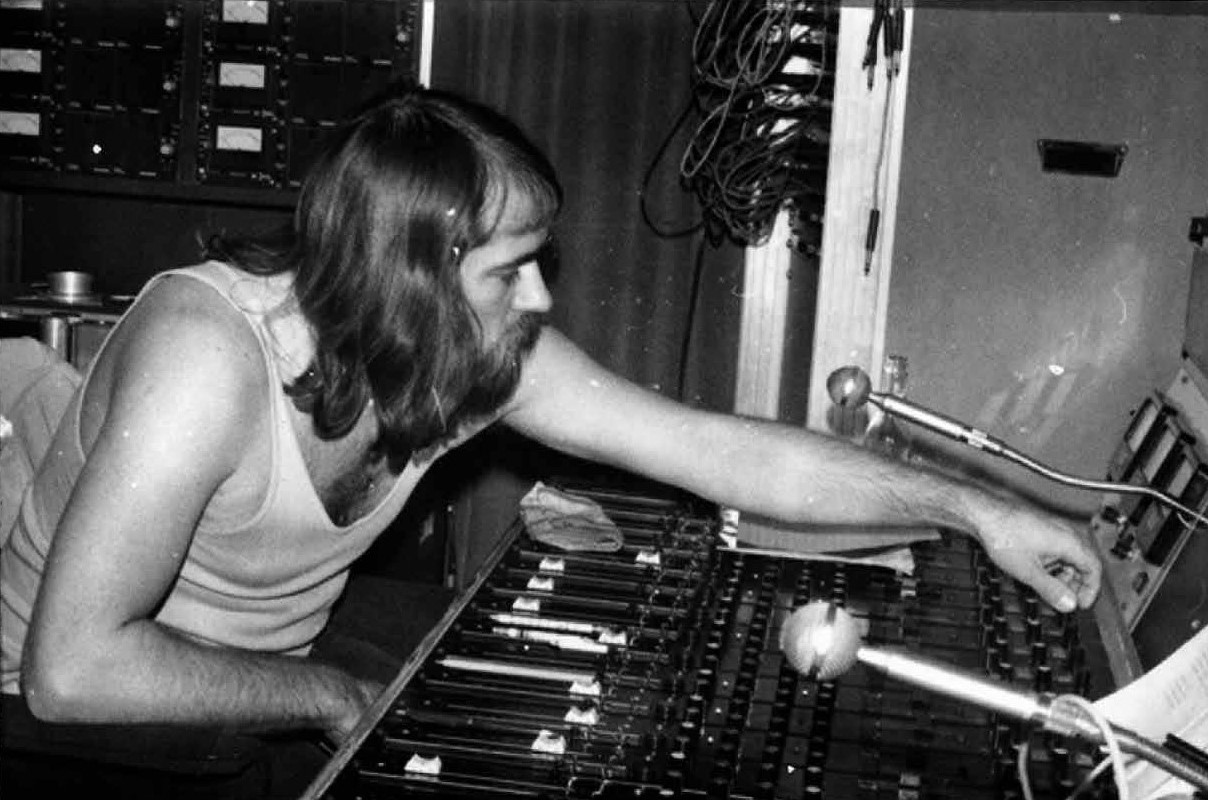
Did you perform extensively? What are some venues where you played, and which bands did you share stages with?
During our three years in Denmark, we performed extensively in Denmark, Sweden, and Germany. In 1974, we received cultural funds to embark on a tour in Greenland, visiting 11 towns within six weeks, which was a tremendous success. We participated in major festivals such as the Roskilde Festival twice, performing in front of up to 40,000 spectators each time, and at Tivoli in Copenhagen twice, with audiences of up to 30,000 people. Additionally, we played at the Midtfyns Festival, which drew approximately 8,000 spectators. In Stockholm, we performed for 8,000 people alongside Hoola Bandoola Band, one of the biggest bands in Sweden at the time (in 1994). We also had the opportunity to perform three shows in East Berlin, invited by “Haus des Jungestalenten” (in 1994). A “pirate” LP from the concert exists, along with a bonus track from the documentary filmed there. It was a memorable experience, known as the “alternative Melody Grand Prix,” following ABBA’s win the previous year.
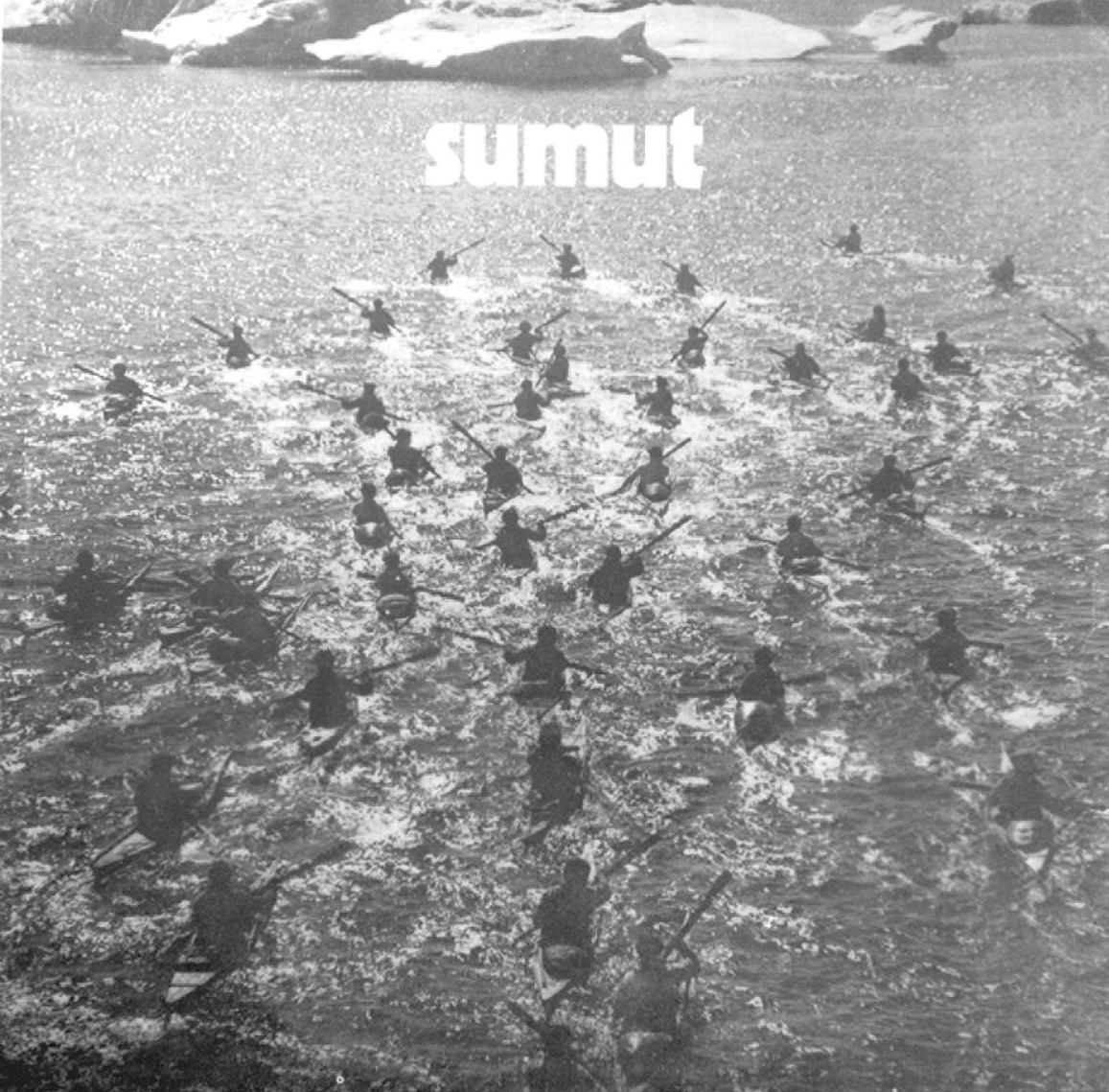
We recorded ‘Persersume’ to celebrate Ulo’s 100th release, following our first release with them. It mostly consists of material that we revisited from our first three releases.
We were invited to embark on a seven-month-long world tour with Procul Harum, but I declined because it would have interfered with my studies. I had made a promise to my dad to complete my education. Similarly, we were offered a shorter world tour with a Native Indian band called Redbone, which I also turned down, as both opportunities would have disrupted my studies. We didn’t aim to become a full-time professional band and agreed to exist only as long as we were studying in Denmark.
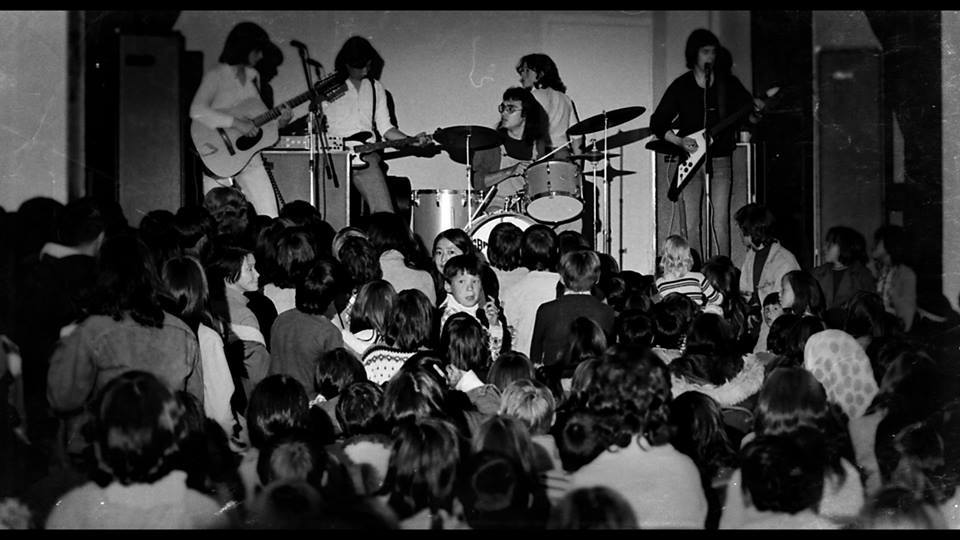
‘Inuit Nunaat,’ released in 1974, followed our debut album. How would you compare it to your first album, and what are some differences?
Our second album, ‘Inuit Nunaat,’ released in 1974, marked a different phase for us. Unlike our debut album, we worked on it independently. With increased experience and self-confidence, we were able to stand on our own.
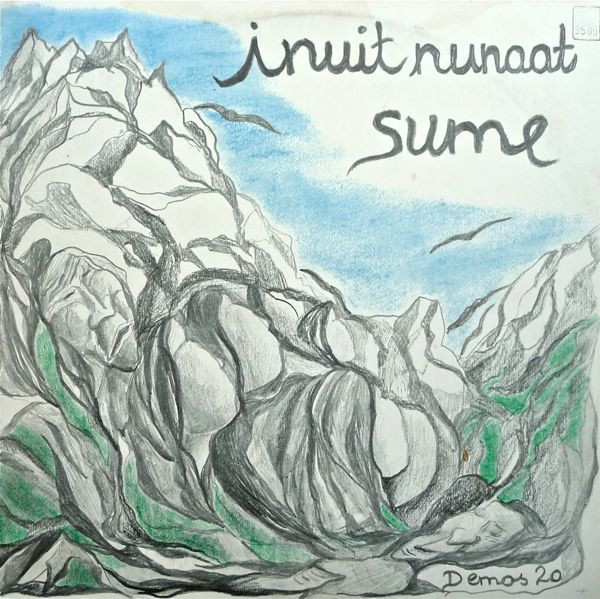
“Our third album, ‘ULO 1,’ released in 1976 in Greenland by Ulo, was a significant milestone for us.”
Regarding ‘Sume’ from 1976, it was released by Ulo, based in Greenland. Could you share more details about it?
Our third album, ‘ULO 1,’ released in 1976 in Greenland by Ulo, was a significant milestone for us. Ulo was a company formed by our producer Karsten Sommer and Malik Høegh. For this album, we welcomed a Greenlandic organ player and an additional guitarist. I particularly enjoyed collaborating with the extra guitarist, Karl Sivertsen, who sadly passed away a few years ago.
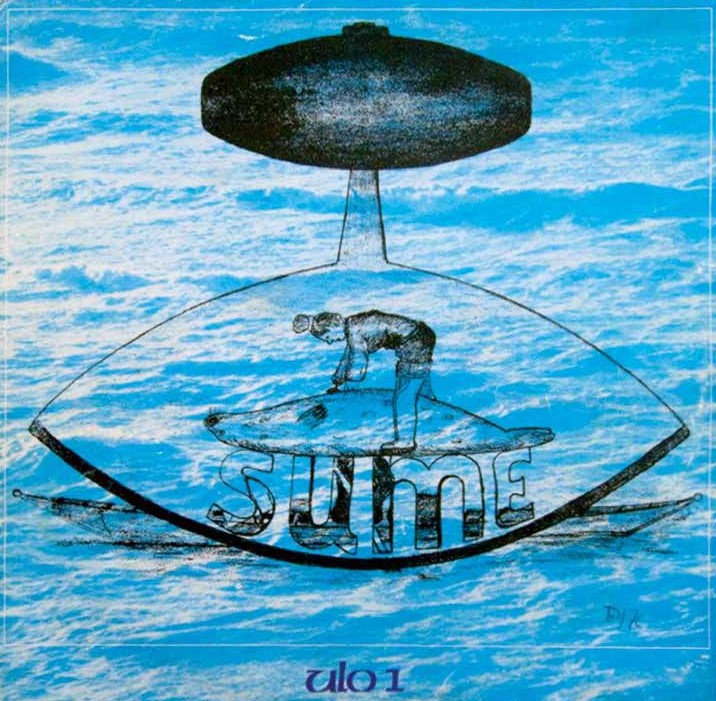
Were you or any other members part of other bands or collaborations during that time? Were there any recordings from those collaborations?
Malik was involved with INUA, but it didn’t achieve the same level of success as Sume. As for me, I found success with my band QAAQ.
The band has frequently reunited for performances, and in 1994, you released a new album, ‘Persersume,’ which marked the 100th release on Ulo. Could you tell us more about it?
In 1994 (if I recall correctly), we recorded ‘Persersume’ to celebrate Ulo’s 100th release, with our third album being the first release for the company.
There was a fantastic documentary tracing the band’s history: “Sume – lyden af en revolution.” What was it like working on it?
The production of the documentary about Sume took four years, partly due to my illness, which left me unable to contribute for almost a year. It’s an engaging production that intertwines Sume’s music and activities with the political developments in the country. You can find it at Atlantic Music, a store in Nuuk (you can search for it online). It’s worth watching, especially since it’s available with English subtitles and features three bonus musical tracks—one from Sweden, one from our last concert at the Cultural Center in Nuuk, and one from an outdoor concert in a former village, where 1,100 people arrived in small speedboats to attend the event in a “ghost village,” accompanied by visually stunning sequences.
Tell us about some other bands from Greenland, like Ulo and Inneruulat…
I don’t have much to share about other bands like Inneruulat and Ulo, except for Ulo, which was formed by Karl Sivertsen, who played with Sume on our third album. Both bands are very talented, though they were also inspired by Sume.
How did your label, Qilaat Music Aps, come about?
My own label, Qilaat Music Aps, released 40 albums over the years, but I stopped when my younger sister, with whom I used to sing, passed away from cancer. I felt a sense of disappointment when Ulo started, as I felt somewhat ignored. I used to joke that “I probably wasn’t ‘red’ enough” (smile), but there were no hard feelings, and we learned to coordinate our releases to avoid overlapping.
Looking back, what was the highlight of your time in the band? Which songs are you most proud of? Where and when was your most memorable gig?
There have been countless highlights, making it difficult for me to single out any one. Similarly, I’m proud of all our songs, but one of my compositions, “Illoqarfittaarsuaq,” from our third album, seems to be a favorite among our supporters.
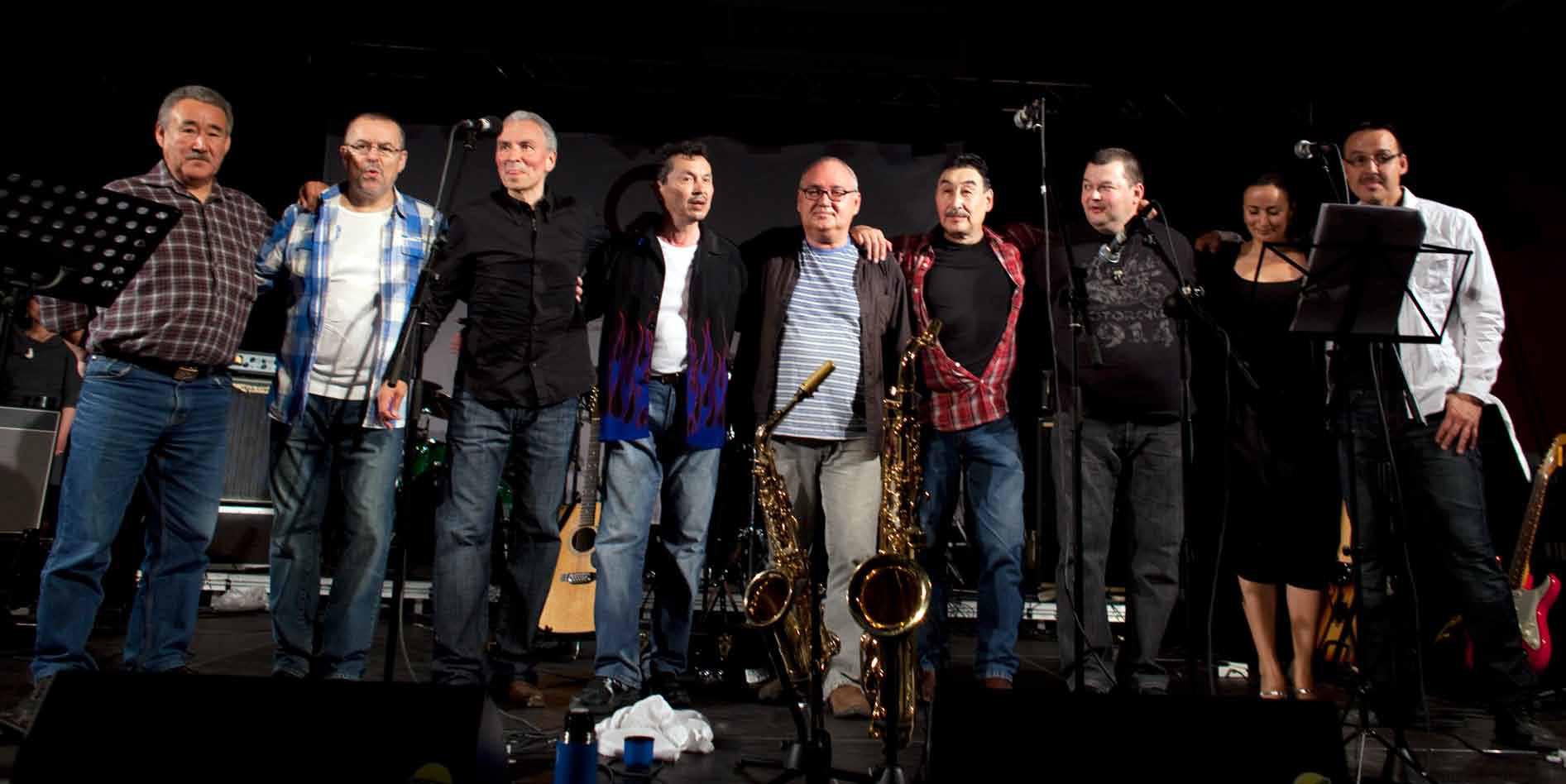
Is there any unreleased material by Sume or related projects?
No, there isn’t any unreleased material. We included everything in the jubilee release in 1994 (‘Persersume’).
Klemen Breznikar
Headline photo: Sume (1976) | Malik, Emil, Per
Special thanks to Milik Publishing

